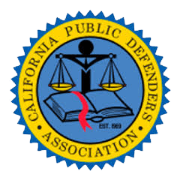
Imagine walking into your favorite department store. The buzz of conversation, the colorful displays, the tempting deals… and then there’s shoplifting. A stealthy figure slipping a coveted item into their bag without paying.
This isn’t just an imaginative scenario – it’s a daily reality for many businesses across America. Shoplifting problems have spiked in recent years causing financial headaches for retailers and stirring up debates within our criminal law justice system.
You’re probably thinking: “Isn’t shoplifting just petty theft? What’s all this fuss about?” But let me tell you, it goes way deeper than that!
Intrigued yet? Hold onto your curiosity because we’re about to dive deep into understanding what shoplifting entails, its legal implications, prevention strategies businesses can use and how social media plays a role in promoting stolen goods.
It seems like your sentence was cut short. Could you please provide the complete information about the rollercoaster? I’m here to help with more context.
Table Of Contents:
- Understanding Shoplifting
- Legal Implications of Shoplifting
- Preventing Shoplifting
- The Impact of Organized Retail Crime on Shoplifting
- The Role of Social Media in Shoplifting Incidents
- Click to Tweet
- Future Outlook on Shoplifting
- FAQs in Relation to Shoplifting
- Conclusion
Understanding Shoplifting
Shoplifting is a common form of property crime, which involves the unauthorized removal of merchandise from a store without paying for it or intentionally paying less for it.
The Historical Context of Shoplifting
The issue has been increasingly problematic over time, especially in major cities. For instance, shoplifting reports showed an alarming 16% increase during the first half of 2023 compared to 2023 across 24 significant urban areas.
This rise in shoplifting rates signals a pressing problem that needs more effective solutions and highlights the necessity for increased awareness around these property offenses.
If you’re tangled up in such incidents this holiday season, getting immediate legal help can make all the difference. But remember: not just any lawyer will do – securing assistance from one who specializes in handling cases like -y-ours could be your best bet at navigating through this predicament effectively. Here in RP Defense Law we are experts that can help you navigate this charges, call us at 818-646-3443.
Legal Implications of Shoplifting
If you’re accused of shoplifting, it’s crucial to understand the legal consequences. In many states, this act is seen as a form of larceny and can be prosecuted accordingly. Some jurisdictions differentiate between general theft and shoplifting when deciding on charges and sentencing.
The Role of Bail Reform in Shoplifting Cases
Bail reform laws have had significant effects on how alleged shoplifters are handled within the justice system. These changes might seem daunting, but don’t worry – securing the best criminal attorney can help navigate these complex waters.
An experienced attorney can make sure your rights are safeguarded throughout the whole legal process. Remember: everyone deserves a fair fight in court regardless if society turns their back or not.
Preventing Shoplifting
In 2023, retailers reported a staggering 19% increase in merchandise losses (shrink), with external theft, including shoplifting, accounting for an average of 36% of these losses. This calls for effective strategies to help businesses protect their assets.
Employee Training for Shoplifting Prevention
To tackle this growing issue, it’s essential to give employees the right tools and knowledge. Training personnel to recognize possible shoplifters can make a significant difference. But remember: good customer service is also key—it creates an environment where customers feel noticed which could deter potential thieves.
Technology in Shoplifting Prevention
Tech advancements have offered new ways to safeguard business interests too. Utilizing modern technology like surveillance cameras or security tags helps deter would-be criminals from attempting any thefts.
The Impact of Organized Retail Crime on Shoplifting
Organized retail crime (ORC) has a significant impact on shoplifting rates. This form of theft involves coordinated groups deliberately stealing merchandise from stores, contributing to an average 36% of all merchandise losses.
In the face-off against ORC, businesses can benefit by joining forces with law enforcement agencies. A concerted effort can lead to better tracking and apprehension of these organized thieves. To effectively combat this rising menace, retailers must step up their vigilance and work closely with law enforcement authorities.
Remember that facing accusations related to ORC or shoplifting should not be taken lightly – you need legal help. Don’t neglect to take a stand against this wrong; battle for your liberties.
The Role of Social Media in Shoplifting Incidents
Social media platforms, although great for staying connected, have unfortunately become a haven for organized groups promoting stolen goods. They’re now used to facilitate shoplifting and even boast about successful heists.
This disturbing trend involves thieves sharing images or videos of their stolen merchandise on sites like Facebook, Instagram, and Twitter. These posts are often shared widely before they can be flagged or taken down by the social media platform’s moderators.
In response to this alarming development, law enforcement agencies have started using these same platforms as tools in their investigations.
By monitoring specific hashtags or accounts known for selling stolen items, police departments across cities like Los Angeles and New York City have been able to make significant arrests linked directly to online promotion of shoplifted goods source.
Click to Tweet
Future Outlook on Shoplifting
Staying ahead is essential in the ever-changing realm of shoplifting. The rise in technology advancements has been a double-edged sword. On one hand, they help businesses bolster security measures; but on the other hand, tech-savvy thieves are using them for their benefit.
Research efforts are focused more than ever before to understand these trends better and come up with effective strategies.
A noteworthy trend we’re seeing is that criminals aren’t acting alone anymore – organized groups stealing merchandise have become prevalent. In response, retailers need new methods to tackle this growing problem effectively.
No crystal ball can predict the future perfectly. But being informed about possible changes helps us prepare for what lies ahead in our fight against shoplifting crimes.
FAQs in Relation to Shoplifting
What is the meaning of shoplifting?
Shoplifting means taking goods from a store without paying, or intentionally underpaying. It’s considered theft and is punishable by law.
How do most shoplifters get caught?
Most shoplifters are nabbed through surveillance cameras, security personnel observations, electronic article surveillance alarms or other customers reporting suspicious behavior.
What are the two types of shoplifting?
The two primary forms of shoplifting are amateur (impulsive acts) and professional (premeditated thefts for resale).
What are the 4 elements of shoplifting?
The four elements include intent to steal, concealment or possession of stolen item(s), passing point-of-sale without payment, and no receipt for possessed merchandise.
Conclusion
Shoplifting is more than just petty theft. It’s a pressing issue that shakes up our retail industry and criminal justice system.
We’ve journeyed through the history of shoplifting, seeing its steady rise over time. We’ve grappled with its legal implications, highlighting the critical role of competent attorneys and bail reform in these cases.
Tactics for prevention? They’re crucial! Employee training to identify potential thieves and technological advancements have been game-changers here. But remember, combating organized crime takes teamwork between businesses and law enforcement agencies.





